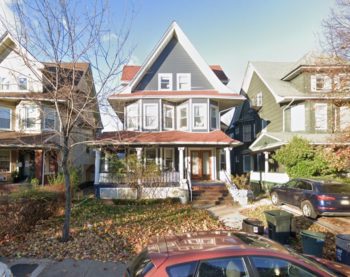
500 Marlborough Road, Brooklyn. Image Credit: Google Maps
Brooklyn resident sought City funds to repair damages allegedly caused by Super Storm Sandy. Christopher McCollum applied to the Build it Back program through the Mayor’s Office of Housing Recovery Operations for financial help to repair his house at 500 Marlborough Rd in Brooklyn. McCollum claimed that Super Storm Sandy, which hit New York City on October 22, 2012, damaged his home. McCollum claimed funds were needed to repair broken and cracked windows and damage to the rear yard, chimney, facade, and roof tiles.
A Build it Back Inspector from the Mayor’s Office of Housing Recovery Operations assessed McCollum’s home. The Inspector found no apparent damage related to Sandy denied benefits to fix the damages.
McCollum then filed an article 78 petition challenging the denial of benefits with the New York Supreme Court. McCollum relied on a report by Paul J. Besmertnik, a home inspector, who opined that repairing the damage to McCollum’s property would cost almost $75,000. Besmertnik’s report contained no signature, certification, or professional seal and did not state what caused the damage. The Supreme Court denied McCullum’s petition.
The Appellate Division, Second Department affirmed the denial of benefits. Under the City’s policy, an applicant for funds must meet one of three prongs to establish their eligibility under the Build it Back program: (1) the Department of Buildings tagged the applicant’s structure as having suffered Sandy damage; (2) proof that the applicant received payment for structural loss from FEMA, NFIP or private insurance; or (3) a damage assessor from Build it Back confirmed that Sandy damaged the structure. Neither the first nor second prong were met; therefore, McCullum’s only option was through prong three.
The Build it Back Inspector, however, reported that the damage was not due to Sandy, but instead a result of a mere lack of maintenance on a 100-year old home. McCollum’s independent engineer report agreed that the home’s damage was due to deferred maintenance, wear and tear, or deterioration, and unrelated to Sandy.
Thus, the third prong was not met, and the Appellate Division found McCullum should not receive benefits from the Build it Back program.
McCollum v. City of New York, 79 N.Y.S.3d 888 (N.Y. Sup. Ct. 2018), aff’d, 126 N.Y.S.3d 490 (2d Dep’t 2020).
By: Steven Nigro (Steven is a New York Law School student, Class of 2022.)


It is believed there to be in all likelihood a more sinister plot taking place not just with this current homeowner but across the greater Kensington, East Flatbush and Midwood section of residential Brooklyn. The Mayor and his NYC DCP handlers have been a driving force behind the push for high density zoning changes throughout the city by partnering with the development industry. It is the goal to eviscerate all of these classic historic 100 year old Americana Homes (as the earliest experiment in the modeling for fine green and treed suburban communities) from increasingly dense urban landscapes and replace them with high density apartment complexes.